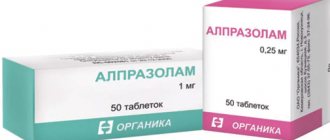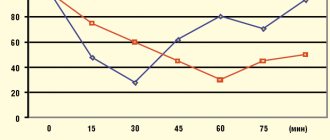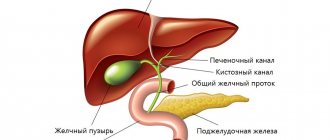Arthritis, arthrosis and other joint diseases require diet. The patient should avoid salty foods and carbonated water. At the same time, a number of products should be introduced into the patient’s diet that help strengthen cartilage tissue and act as a natural pain reliever.
When answering the question of which foods help restore joints, a person suffering from arthritis or arthrosis should pay attention to fatty fish, legumes, olive oil, oranges, cherries, pomegranates, dairy products, green tea, whole grains, brown rice, broccoli, Brussels sprouts cabbage and garlic.
Legumes
To restore normal joint function, inflammation must be eliminated. This is usually the cause of collagen damage and subsequent cartilage destruction. Legumes have excellent anti-inflammatory properties. They contain protein that replenishes collagen reserves. Thanks to this product, cartilage tissue is restored. In addition, legumes contain amino acids that promote cartilage regeneration. It remains to be recalled that legumes include beans, peanuts and peas.
How to store lingonberries
Lingonberry fruits are harvested from August to October, when they are fully ripe and have acquired their characteristic bright color. The richer the color, the more useful substances the berry contains and the more beneficial its effect on the body. The property of the fruits not to fall off the bush allows you to extend the collection of lingonberries, which is done manually or using a special scraper.
There are several ways to preserve wild plants, which do not lose their beneficial properties for a long time, keeping the composition of the fruit unchanged. Ancient recipes contain ingredients that are not used today, so preparing a healthy product according to original Russian traditions is problematic. But, despite some changes in the recipe, the composition of the fruits and their effects on the body have not changed.
Soaked Vaccinium vitis-idaea is prepared according to the following recipe:
- Washed Siberian berries are mixed with sugar (2:1 or 5:2) and transferred to an enamel bowl where they will be stored.
- A squeeze is placed on top of the lingonberries and filled with clean spring water with the addition of spices. You can add cinnamon, cloves, allspice to taste.
- The dishes are covered and lowered into the cellar for 30 days. Then I use the syrup to make drinks, and add a fresh portion of water to the soaked berries.
There are several recipes for soaked fruits, and among them there is a traditional, simple one for sauces. In a simple recipe, healthy lingonberries are stored in water without adding sugar. They are preserved due to the presence of benzoic acid (0.2%) in the composition.
Another method of long-term storage is freezing. Frozen berries are beneficial for the body in the same way as fresh ones: they completely retain the composition and supply of components important for health. The sequence of actions is as follows:
- The berries are sorted and washed, discarding crumpled and unripe specimens.
- Dry on a towel so that no moisture remains on the surface.
- Place in portions into bags, seal tightly and place in the freezer.
- To prevent the fruits from sticking together, the freezer is kept cold to -20-24C.
The beneficial properties of lingonberries are preserved when properly defrosted. After removal from the freezer, the bag is placed on the refrigerator shelf, where the berries are defrosted gradually, over 5-8 hours, preserving the composition and benefits as much as possible.
Another convenient option for long-term storage of lingonberries without losing their beneficial properties is drying. To prepare dried fruits proceed as follows:
- The berries are sorted, washed and dried.
- Place on a sheet of parchment in the oven, preheated to + 60C.
- Bring to dry completely (3-4 hours), stirring occasionally.
- Leave the oven door slightly open during drying.
- Crack into glass or clay containers and seal tightly.
Dried lingonberries can be ground in a mill and used in powder form. A drink from the powder is prepared simply: pour a spoonful of the crushed mixture into a glass of boiling water, infuse, add honey and the healthy vitamin drink is ready. It can be drunk as tea with vitamins during periods of bad weather and colds, supporting the body's immune strength.
A traditional drink made from lingonberries is considered to be fruit drink, which retains a maximum of beneficial microelements. The mashed berries are boiled for 5 minutes and sugar or honey is added to taste. Infuse the drink and drink it chilled. The cocktail consists of milk and lingonberry with honey and is very popular with children. And lingonberry compote with the addition of apples is a real delicacy and a vitamin cocktail for the body.
Lingonberry juice is also useful, which in the form of a diluted drink reduces the temperature during inflammation and has a beneficial effect on the immune system, strengthening the body's defenses. Juice is squeezed out of lingonberries and boiled water is added 1:1. Taking a glass after an hour will restore the body's defenses.
Lingonberries have always been used in traditional Russian dishes. Mousses, compotes and jam were offered as desserts; it was added to baked goods and made into jelly. Candied berries were a children's delicacy. In winter, sauerkraut and pickled apples containing lingonberries were taken from the cellar (they were used for flavor and as a preservative). The marinades and sauces for meat dishes were delicious.
Brown rice
Brown rice contains a large amount of hyaluronic acid, which is used in the development of injections to treat joint diseases. Hyaluronic acid is a kind of lubricant for joints. It acts as a shock absorber. It is often used to treat minor cartilage injuries. Therefore, foods high in this substance should always be in the diet of a person who has joint problems.
In addition to brown rice, carrots and beef are high in hyaluronic acid.
What is lingonberry
Most Russians know where the healthy lingonberry (Vaccinium vitis-idaea) grows. She lives in forests: from gloomy conifers to cheerful deciduous shards. Where lingonberries grow in Russia, it is entirely tundra and peat bogs - this is its favorite refuge. The distribution area of the small shrub covers Siberia, the Far East and Central regions, including Murmansk and Arkhangelsk. Vologda.
The wild plant forms evergreen, subshrub, branching forms that grow to a maximum of 10-20 cm. The bushes bloom with white and pink bell-shaped flowers collected in brushes. The hard, dark green, glossy petiolate leaves contrast with the small, deep red berry. People observe what lingonberries look like and how elegant the clearings with the tart-sour-tasting berry are in the fall (August-September) during the fruit harvest.
Wild lingonberries in forests and garden lingonberries differ in the size of the bush and the taste of the berries, but the chemical composition and beneficial properties are fully preserved. Thanks to breeding work, Vaccinium vitis-idaea can now be grown in your garden plots, but special conditions are needed for its growth. Which berry to prefer is decided by the lover of fruit drinks or liqueurs made from tart fruits.
Although lingonberry is a subshrub, it has an enviable life expectancy. Clumps collected from shrubs and connected by a common rhizome live from 100 to 300 years. Fruiting begins when the plant reaches 15 years of age.
Garlic
Garlic contains many useful components that help restore cartilage tissue and suppress inflammatory processes. This product contains a large amount of sulfur-containing substances, which strengthen cartilage tissue. In addition, regular consumption of garlic prevents swelling and helps cope with pain that occurs as a result of rheumatoid arthritis. It is important not to overuse this product. It is recommended to eat no more than three cloves daily.
How to grow lingonberries
There are 20 known varieties of Vaccinium vitis-idaea, which can be freely cultivated in garden plots. Most of them are new selections that appeared relatively recently. Lingonberry bushes are grown not only to produce berries rich in composition and beneficial properties, but also to decorate a summer cottage.
The correct choice of variety is important. It determines the goals of growing lingonberries. The varieties differ not only in their properties, but also in their care requirements. The main conditions for growth are moist, acidified soil and plenty of sunlight. Lingonberries grow in a temperate climate zone; they cannot be turned into a tropical exotic. At home, flowerpots are suitable for growing berries.
Each variety has its own distinctive features. Thus, the Rubin variety is high-yielding, but the fruit ripening period is late. At the end of September, up to 320 g of ripe berries are obtained from each bush. Feels good in cold winter conditions. And the Red Pearl variety is large-fruited (berries up to 12 mm in diameter) and produces 2 harvests - in July and October.
In the natural environment, the healthy berry is propagated by seed, but obtaining lingonberries from seeds at home is quite problematic. It is more convenient to propagate garden varieties by cuttings and divisions.
They tried to cultivate lingonberry bushes already in 1745 by decree of Empress Elizabeth Petrovna, who wanted to see useful lingonberry plantations in the vicinity of St. Petersburg. But real plantations appeared only in the 60s of the last century. The fruit yield on them was 20-30 times higher than in natural conditions, and the composition was practically no different from wild plants.
What diseases are lingonberries useful for?
Lingonberry has been used in Rus' since time immemorial, so its properties and benefits in the treatment of various diseases have been well studied. Witch doctors and healers used “lingonberry elixir” for many diseases. Modern medicine does not deny the beneficial properties of berries for the body, and the list of these properties is quite large.
Table: “Beneficial properties of lingonberries for a number of diseases”
| 1. | Genitourinary system | Lingonberry is an excellent diuretic for the kidneys. This is the prevention of urolithiasis: stones are not formed due to the rapid outflow of fluid. |
| 2. | Gastrointestinal problems | The berry is useful for gastritis with low acidity. The lingonberry drink is characterized by laxative properties, it improves intestinal motility and has the ability to increase appetite. |
| 3. | Cold infections | Colds go away with the use of lingonberry fruit drinks, which help with fever and runny nose. Cough lingonberries are prepared as a drink mixed with honey. The berry enhances the effect of antibiotics. |
| 4. | Diabetes | Due to the ability to normalize metabolic processes, blood sugar levels are kept at a constant level. |
| 5. | Anemia | Lingonberries have the property of increasing the level of hemoglobin in the blood, which facilitates oxygen access to cells and accelerates metabolic processes. |
| 6. | Hypertension | The ability of berries to slightly lower blood pressure has been noted, so regular consumption of drinks is beneficial for hypertensive patients. |
| 7. | Swelling | The berry and leaves help remove excess fluid from the body, relieving swelling in old age and during pregnancy. |
| 8. | Gout | For arthritis, arthrosis, gout, any damage to joints and cartilage, lingonberries help get rid of pain and discomfort when moving. Decoctions are used not only internally, but also applied externally in the form of compresses. |
| 9. | For pancreatitis | The berry is useful only in the remission stage. It enhances the secretion of the pancreas and is able to relieve inflammation, which restores the functions of the organ. |
| 10. | Ischemia | The fruits have a positive effect on the heart muscle, strengthening and improving its activity with regular consumption of drinks. |
| 11. | Worm infestations | Due to the presence of alkaloids, essential oils and acids, regular intake of teas and infusions gradually eliminates parasites. |
The properties of the useful, medicinal berry, its ability to fight inflammation, colds, and increase defenses are used at any age. The consumption of lingonberries has no age restrictions.
Cooking recipes
Below are several recipes based on this berry.
Morse
Ingredients:
- 6 tbsp. l. Sahara;
- 500 grams of lingonberries;
- 3,000 ml water.
Recipe:
- Pass the berries through a fine sieve. Squeeze the juice from the resulting puree.
- Pour water into an enamel pan, add cake and sugar.
- Bring the mixture to a boil and simmer over low heat for about 5-8 minutes. The dish is ready.
Compote
Necessary:
- 300 grams of lingonberries;
- 3,000 ml water;
- 200 grams of sugar.
Cooking diagram:
- Carefully sort the berries.
- Pour water into an enamel pan. Boil. Add sugar and berries.
- Cook over low heat for about 5-9 minutes. Turn off the gas. Let cool for 45 minutes.
Tea
Ingredients:
- 1 tbsp. l. lingonberries;
- 200 ml boiling water;
- 1 tsp. black tea;
- honey - to taste.
Recipe:
- Pour boiling water over the berries and black tea. Add honey.
- Let sit for about 10 minutes.
general characteristics
Lingonberry is an evergreen shrub with creeping rhizomes. This plant is very small - straight branched stems rarely grow higher than 30 cm. On the outside, the rounded leaves are shiny and dark green, on the inside they are light with brown dots. In spring, flowers with a weak but very pleasant aroma appear on short lingonberry stems. By the end of summer they are replaced by coral berries with reddish-brown seeds. Lingonberry is a perennial plant. Some specimens can bear fruit for almost 300 years. It grows best in forests, swamps, and thickets of arctic and subarctic regions. This plant is “related” to cranberries and blueberries, but is richer in nutritional components. Does well on acidic soils in Greenland, Siberia, the Caucasus, northern Asia, Scandinavia, Canada, and North America.
Harm to the body and contraindications
Lingonberries, the berries of which have beneficial properties and contraindications, are not used in the following cases:
- for gastritis with high acidity, stomach ulcers;
- for cholecystitis;
- if there is a history of hypotension;
- with urolithiasis.
Due to the diuretic properties of the fruits, they lead to the movement of stones in the kidneys and gall bladder, which will aggravate the pain and result in complications in the body. When the gastrointestinal mucosa is damaged (ulcers, gastritis), inflammation occurs, since lingonberry juice contains many organic acids. Fruit drinks and drinks can be consumed at any time, but preparations containing lingonberries can only be consumed before meals, on an empty stomach. This regime is important to bring real benefits to the body.
Lingonberries have the property of accumulating radioactive substances. Berries need to be collected in ecologically clean areas, away from enterprises and highways. Sometimes in swamps, berries “ring” from radiation, as rocket stages are dropped into remote, remote places.
Siberian berries are not as tasty as cherries, apricots or strawberries. Not everyone likes its tart taste. But the prepared desserts perfectly quench thirst, saturate the body with vitamins and give Siberian health and energy, which are so needed in our difficult environmental situation, which is combined with the fast pace of life.
What are the benefits of lingonberries?
Not only the berries, but also the leaves of the shrub, the composition of which is no less rich, have beneficial properties. The leaves are collected during the flowering period, when they are saturated with components important for the body. Berries - in the period of their full ripening.
The benefits of lingonberries for the body are invaluable. It is an excellent antiseptic, antioxidant, and immunostimulant. Drinking fruit drinks, syrups, compotes and other drinks containing lingonberries keeps the body in good shape, giving vigor and strength.
For women
The benefits of lingonberries for women are well known to those whose menstrual cycle is extremely painful. Red berries will relieve pain during menstrual periods. Drinks in the form of decoctions and infusions help treat inflammation of the genitourinary system.
In cosmetology, masks made from lingonberry leaves are in demand and useful for hair loss, dandruff, and skin inflammatory processes. Masks made from fruits have moisturizing and firming properties and help fight the first wrinkles due to their unique composition. They are useful at a young and mature age. Parallel intake of drinks will keep the body in good shape.
Lingonberry extract, due to its antioxidant activity, delays the aging process and reduces the harmful effects of the environment on the epidermis, strengthening its walls. The enzyme arbutin contained in the leaves has the property of removing age-related hyperpigmentation processes on the skin.
Is it possible to eat lingonberries during pregnancy and breastfeeding?
The berry is useful in the diet of pregnant women. It has the following properties:
- Saturate with vitamins that the body needs, which does double duty. For example, vitamin C supports immunity and reduces the likelihood of inflammation, and B vitamins maintain a stable emotional background.
- Healthy lingonberry leaves, taken in the form of infusions, will help increase hemoglobin levels and relieve swelling in the last months of gestation.
- During lactation, lingonberry drinks keep the breasts healthy, reducing the risk of mastopathy, lactostasis and other diseases.
The main beneficial properties of berries during pregnancy are the ability to relieve intoxication, fight hypertension, neuroses, immunodeficiency, anemia and replenish the lack of microelements in the body.
Flowering lingonberry branches help maintain pregnancy, and jam is useful after childbirth. The berry is hypoallergenic, its composition is harmless to the body of mother and child. Contraindicated only for gastritis with high acidity, low blood pressure, urate stones and in the first trimester of pregnancy.
For men
Lingonberry has the ability to relieve inflammation of the genitourinary area, saving the male body from pathologies in this area. Due to their high content of procyanidins, lingonberries are successfully used in the prevention and treatment of cancer (colon cancer, leukemia). Honey jam is useful as a preventative against prostatitis, which often develops in the body with age.
The composition of the red berry will protect men from inflammation and pain due to osteochondrosis, arthritis, and gout. Due to the presence of quercetin, lingonberries have analgesic properties. For skin problems (eczema, psoriasis), the fruit pulp is applied to damaged areas of the dermis. For scabies and lichen, freshly squeezed juice in the form of compresses is useful.
To maintain oral hygiene and prevent periodontal disease after brushing your teeth, it is useful for men to rinse their mouths with lingonberry infusion. The drink contains tannins, which have antimicrobial properties.
For children
Pediatricians argue at what age lingonberry berries are beneficial for a child’s body. The prevailing opinion is that lingonberries are introduced into children's diets from the age of one year, starting complementary feeding with one berry and gradually increasing the dose. Fruit juice or berry puree, which the baby really likes, is useful (drinks are not used in concentrated form). A grown-up toddler is offered lingonberries in sugar syrup. Since preservation processes occur due to the properties of benzoic acid, the berries are perfectly stored in the refrigerator. They are placed in jars, filled with sugar syrup without sterilization.
Berries are beneficial for children, as due to their composition they have the following properties:
- increase immunity in the off-season;
- relieve fever and inflammation;
- waste and toxins are rejected;
- there is a fight against colds;
- provide assistance with inuresis (brew leaves and dry fruits);
- used in the prevention of kidney diseases;
- increase appetite;
- fight constipation.
Lingonberries have the property of strengthening the baby’s body’s defenses and saturating the body with vitamins. The product is hypoallergenic, but individual intolerance is possible, so consultation with a pediatrician is required.
Chemical composition and calorie content of lingonberries
The beneficial properties of lingonberries for the body are associated with its chemical composition. Lingonberries are rich in vitamins. The berry contains 86% water, but the rest of the composition is amazing:
- weight vitamin set from group B, A, C, PP, E;
- mineral complex with iron, manganese and a number of trace elements;
- an abundance of organic acids beneficial to the body, from common to rare ones;
- the presence of flavonoids that stop damage to the walls of blood vessels;
- lycopene with characteristic antioxidant activity;
- vaccinin glycoside – an excellent aniseptic that relieves inflammation;
- zeaxanthin, which supports vision;
- tannins that can bind heavy metals and remove them from the body;
- 10-15% are glucose, fructose, sucrose - one of the energy sources;
- The composition contains starch and dietary fiber, useful for the gastrointestinal tract.
There are only 46 kcal per 100 grams of lingonberries. This amount of berries satisfies the body’s daily need for organic acids by 95% and vitamin C by 17%.
Lingonberries are able to retain beneficial properties in the form of a set of components important for health, even after heat treatment. When drinking juices, fruit drinks, compotes with red berries, people do not realize that they enrich the body with substances important for good health.







